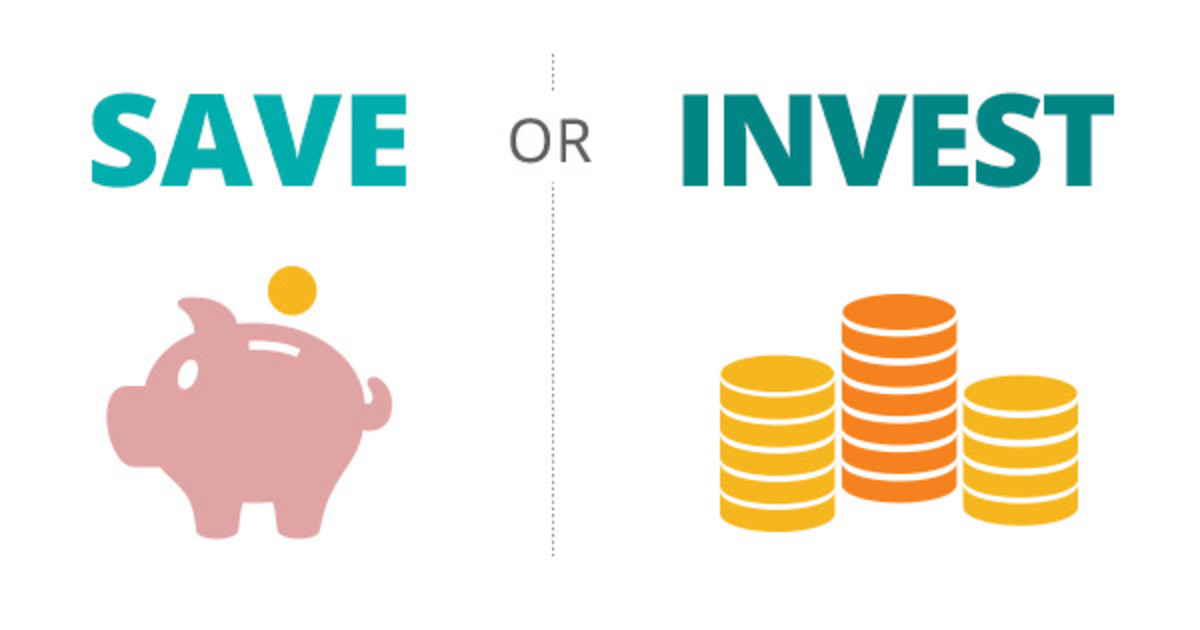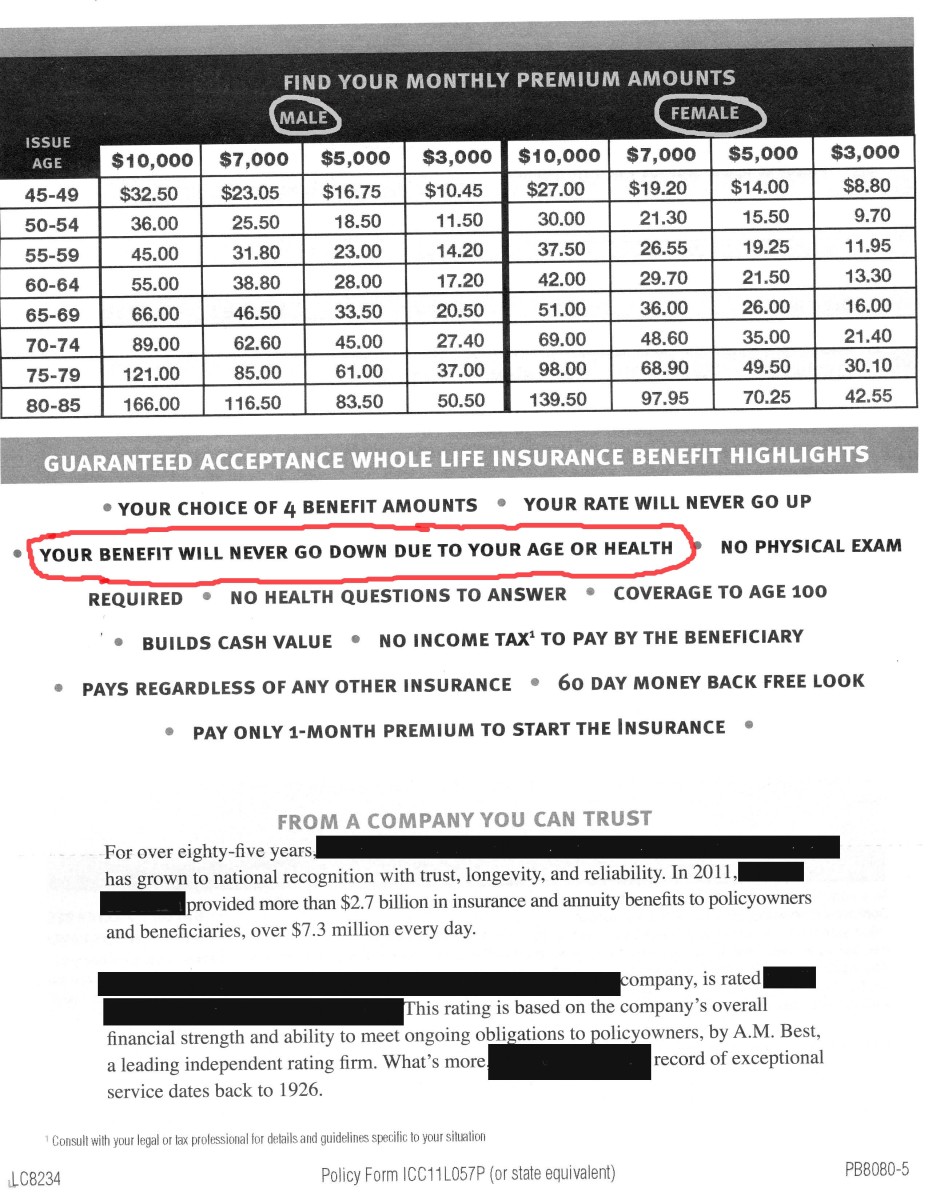Retirement Investing and Life Insurance Information

It seems like every time we get an opportunity to save some money, something always comes up. While we can’t stop those things from happening, we can learn how to build a wining financial game plan that won’t get sidetracked by life’s detours.
Many people will earn a fortune over their lifetime and will still end up with virtually nothing to retire on. For instance, if you earn $600 per week, you will have over $1,200,000 pass through your hands in an average working lifetime of 40 years!
One of the secrets of getting off that treadmill is not squandering sums of money normally regarded as too small to be significant.
If you’re approaching your mid-forties, you’ve probably already worked 20 years. If so, you are halfway to retirement. Ask yourself if you have presently accumulated at least half of what you need to live on for the rest of your life. Statistics show that most people haven’t. And working harder isn’t the answer, investing smarter is!
So if you’re ready, let’s get started with the retirement investing principles that can help you reach your financial goals!
Pay Yourself First
By paying yourself first, I mean putting 10% of your income towards your savings and investments before anything else. By doing this, you’re putting yourself and your family ahead of your creditors. Otherwise you might find, like many others, that you have too much month left at the end of the money.
Now I’m not advocating not paying your bills. It’s just that it always seemed to me, when I paid my bills first, there was never any money left to save or invest with. But when I paid myself first, I still found the money to pay the bills.
The first place for your 10% is to build up approximately three months or more of living expenses in a savings account. This is not a financial investment, it’s an emergency fund. This is here so you won’t have to sell any investments later on to pay for any personal emergencies that might arise.
Another example of paying yourself first is to live below your means. For instance, when you get a raise, put a good portion, if not all of it toward your retirement nest egg. If you were getting along fine before the raise, don’t waste it, invest it!
Control Credit Card Debt
Would you buy a house and pay 18 percent interest? Would you borrow money for a car loan at 19.5 percent? You would probably say doing either one of those would be crazy. But many people buy just about anything their hearts desire with credit cards and not even think twice about those rates. Pardon the pun, but if you have at least one credit card, this should be of interest to you.
Many people today carry credit card debt every month, meaning they don’t pay off the balance in full every 30 days. This is not new, as it has been well documented for years that credit card debt can wreck an otherwise sound retirement plan. But the credit cards aren’t really the problem; it’s how people handle them.
The following will give you an example of the power of credit card debt to rob you of financial success: Let’s say you owe $5,000 on a credit card at 14 percent interest and you make a payment of $60 per month. How long will it take to pay off the debt if you don’t charge another penny while you’re paying off the balance? The answer is about 308 months or almost 26 years. Now, if you really want to see what’s happening to your future retirement, multiply the 308 months by the $60 monthly payment. The answer is $18,480.
When you subtract the original $5,000 balance, you get what the $5,000 cost you in interest: $13,480! And that’s only if you stopped using the card at the original $5,000 balance. Stated simply, if you keep charging, you might not live long enough to pay off the debt; the interest will be staggering.
To address the existing debt, make sure to keep all payments current and put as much money as you can toward higher interest cards first. Once you get the cards under control, you can play the game on your terms. Get a card with no annual fee and a 25-30 day grace period that allows you to pay your debt in full every month without an interest charge. You do this by only buying things for which you already have money in the bank. So, when the bill comes in, it’s easy to pay it off.
Some of you are probably saying, “Are you kidding me?” But believe me, it’s possible. It really comes down to whom you’d like to make wealthy, you or the credit card companies.
Reaching Our Financial Goals – Finding Money To Boost Our Retirement
A mortgage is most often the biggest expense anyone has, so naturally it’s a good place to look for possible savings. I understand that you might not have a mortgage right now, but the following is good information to remember when the time comes and you find yourself tackling home ownership.
The best way I have found to shop for mortgages is to ask for both the rate and a truth in lending statement. A truth in lending statement should have all your closing costs on it, so you can choose the best rate with the lowest costs. Otherwise, it’s too easy to get confused when one rate is lower, but the points are higher, or when one has no points but the closing costs seem higher and the rate seems reasonable.
If you already own a home, you might consider refinancing if you’re going to continue to live in that house for a reasonable period of time and if you can save at least 2 percent or more on your current interest rate. You will usually incur a new set of expenses and closing costs when you refinance. You will need to shop around just like it is a brand new loan, because in essence, it is.
Some lenders advertise refinancing with no “out of pocket” expenses. This usually means that the cost of the refinancing is going to be added to your new mortgage balance. If this is the case, keep a close eye on these expenses. Make sure the payback is worth it. Ask yourself whether you plan to live in the home for a sufficient period to save enough on the lower payment to offset the expense of the refinancing. If so, take that monthly savings and put it in your nest egg.
Understanding The Rule of 72
The rule of 72 is a mathematical formula that calculates approximately how long it takes your money to double, by dividing the interest rate you’re earning into the number 72. The answer is the number of years it takes for your money to double.
For instance, if you were able to earn an average 6 percent average annual rate of return on an investment, divide 72 by 6 and you would get 12. This is the number of years it would take for your money to double. That means that in 36 years, your money would double three times. First, $1,000 doubles to $2,000, then $2,000 doubles to $4,000 and finally $4,000 doubles to $8,000.
If you think that’s a lot, imagine if I could make 12 percent for those 36 years. This means the money would now double every 6 years (72 divided by 12). If you work through the numbers you will see that the total in 36 years is now $64,000, instead of $8,000. Wow! Doubling the interest in this example would mean making eight times the money. If you have some time on your hands, you could work through the example using 18 percent return. (The money would double every 4 years.) Just make sure to be sitting down when you do.
As you can see, the difference of a few percentage points over a lifetime can result in thousands of dollars of additional money for your retirement savings.
Lastly, here’s one of my favorite examples of compounding. Let’s say you’ve been hired to complete a task for someone that will take 30 days. He tells you to choose which way you would like to be paid for your month’s work. You can choose to receive either $1 million in a lump sum or one-cent on day one and have it doubled every day for 30 days. Which would you choose?
Well, since I’m writing about compounding, you probably guessed that one-cent doubled daily is the correct answer. By the way, that works out to over $5,300,000. The bottom line to all of this is, know the rates of return that your investments are earning and fight for every percentage point.
What To Look For When Selecting Mutual Funds
I believe mutual funds are one of the best investment vehicles and therefore should be a part in virtually every retirement plan. With mutual funds, you get the benefit of professional management. Some of the best minds on Wall Street handle the difficult job of selecting investments for the fund you’ve chosen while you’re at work or play.
You also get diversification. Many times 100 stocks or more are included in one fund. The main disadvantage to a mutual fund, of course, is that there is no guaranteed return. Stock mutual funds can increase or decrease in value due to fluctuations in the market, meaning you could either make money or lose it. Unlike a savings account or a CD with a major bank, there is no FDIC insurance to cover your losses.
However, for an investment to have a chance of out-pacing inflation, it can’t be tied to any particular fixed rate of return, like federally insured CDs and savings accounts. CDs and savings accounts play a role in retirement planning, but not as wealth-building vehicles.
It’s not my intention to give you all the information you might need regarding mutual fund investing, because there is more to that than I can cover here.But I can give you some simple guidelines for researching stock mutual funds. These tips will give you a jumping-off point to do your own research and to know which questions to ask if you use a financial advisor.
You will want to evaluate the track record, management team and categories of stocks within the fund. First, look at the fund’s previous track record, meaning how the fund has performed over the last one, three and five years. Sometimes a 10-year history is available, but many times that history isn’t helpful because so many variables could have changed over the years.
Keep in mind, even though past performance doesn’t guarantee future results, it will give you an idea whether the fund manager knows how to maximize returns. Whether he or she can do it again is another story, but at least you know whether the manager has traveled that road in the past. Also, when you check the track record of a particular fund, make sure that the fund manager who was responsible for those returns is still in charge. If not, you would have no way of evaluating the fund’s long-term management.
Next, evaluate the fees. There are a variety of charges associated with mutual funds. Commissions, marketing charges, and fees due upon sale, are just some the things you will want to research. Obviously, the more charges you pay, the more your return is reduced. Be sure to check the prospectus of each fund to see which charges apply.
Next, evaluate the risk factors. It’s also important to look at a fund’s risk category. Most fund families categorize their funds as low, medium or high risk.
Again, this information is really just scratching the surface of what you need to know to make an intelligent decision. So, don’t invest without first doing your homework and get your investment advice from a qualified financial advisor. Lastly, never invest in anything you don’t fully understand. Being in a hurry to invest can get you into trouble.
Understanding Dollar Cost Averaging
Dollar-cost averaging is a fancy term for investing small amounts of money on a consistent monthly basis, as opposed to in a large lump sum once a year or so. For instance, let’s say you invest $100 in a mutual fund that is currently selling at $10 per share. You would have bought 10 shares ($100 divided by $10 per share). Next month, the price of the fund drops to $5 per share and you invest $100 again, this time buying 20 shares. In the third month, the fund price increases from $5 per share to $7.50. You invest another $100, this time buying 13.3 shares.
If you total your shares for the three months, you would find that you have 43.3 shares. If you then multiply the 43.3 shares by the latest fund price of $7.50, you would find that your account is now worth about $324.75. That’s $24.75 more than you invested — even though the share price is still below the original starting price of $10. Another great benefit of dollar-cost averaging is that many mutual fund companies will waive their required minimums for investors who set up automatic contribution plans.
Keep in mind that dollar-cost averaging does not protect against losses in declining markets. If all the market does is go down, it really doesn’t matter how often or when you invest, you’re going to lose money.
There’s another school of thought regarding how to invest: lump sum investing. As the name implies, you put the entire amount in at one time. If you had $10,000 to invest, instead of dollar-cost averaging it into the market every month over a year or two, you would invest the entire $10,000 at once. The reasoning is, if you think the market will be higher over time, why not put all of your money to work for you immediately? If the reason we’re all investing in the first place is to make money and if we expect the market to be higher over the years, (even taking into account all of the ups and downs), then this approach certainly makes some sense, too.
There are a few reasons, however, why I believe most people would be better off dollar-cost averaging their investment monies. First, many people don’t have a lump sum to invest. (That’s a big roadblock to lump sum investing.) What they do have is a certain amount of money from their paycheck to invest monthly. Second, if you put a lump sum into the market right before the market has a big correction (a correction is when the market drops to better align stock prices with their earnings) and see 20-30 percent or more of your investment erode almost immediately, you might be psychologically unable to deal with it. You might want to take out all your money, which is almost always a bad move. That would just cause you to lock in whatever losses you just suffered.
Third, if you were dollar-cost averaging a lump sum and the market did correct, you would have the option of putting a lump sum in at that time and buying at a much lower — and therefore better — price. Both lump sum investing and dollar-cost averaging have merits, so you need to decide which is best for you.
Using Tax-Deferred Growth To Build Your Nest Egg
Usually, investing the maximum amount of your earned income allowed into a retirement account, such as an IRA (Individual Retirement Account), 401(k) or any other tax-deferred plan is an excellent move. This should be money, however, that won’t be needed in the near future and can be invested for a long time. This is because most of these programs penalize you for money you withdraw before age 59½.
Keep in mind that an IRA can take the form of many different types of investment vehicles, such as a savings account, CDs and, of course, mutual funds. There is no difference between investing in a regular mutual fund account or in a mutual fund as an IRA, except how the government views it for tax purposes.
Just so we’re clear, tax-deferred means that, you don’t have to pay tax on any of the capital gains and/or dividends you earn during the years your investment is growing. The taxes are paid when you begin withdrawing the money.
As an example, let’s say you were going to invest $2,000 per year for 40 years and you were able to average 10 percent annual interest during that time. (I used $2,000 in these examples, but you can contribute more if you choose, subject to IRA contribution limits.) If you were in the 28 percent tax bracket, your investment in a taxable account (one in which you had to pay taxes annually on your gains) would total approximately $450,000.
That same exact investment in a tax-deferred account would total approximately 973,000 — more than double! Now let’s say you could do a little better on your investment, this time earning 12 percent. You would still invest $2,000 over 40 years. Now your taxable account would total almost $667,000 and your tax-deferred account would be over $1,700,000. That’s an extra million dollars!
Another option is the Roth IRA, named after Senator William Roth who invented it. It’s the retirement vehicle of choice for many people who don’t have employee-sponsored plans. In a Roth IRA, you invest with after-tax dollars, as opposed to a traditional IRA, in which you usually invest with pre-tax contributions (meaning you get to deduct them from your income that year).
Since your contributions in a Roth IRA are made with after-tax dollars, (meaning you did not get a tax-deduction for them) the government allows your money to grow tax-free! (Assuming all the guidelines have been met) This obviously means a lot more money for you.
Be sure to check with your financial advisor and your accountant when deciding which type of retirement account is right for you. Once you find out which program is best for you, let the government begin helping you to build your nest egg through reduced taxes.
Diversifying Your Investments
I’ve heard people say, “Have all your eggs in one basket, and then watch that basket.” I disagree. I believe you should never have all your eggs in one basket, no matter how promising a particular investment might look. You should have a mix of stock funds, bond funds and cash savings in accordance with your investment objectives and retirement plan. The mix should be decided based on your age and risk tolerance and this type of investment advice should come from a qualified financial advisor.
As an example, normally, the younger you are, the more you would want your investment monies in stock funds, which have the potential to give you a higher return in exchange for higher risk. Over the long haul, the “up” years should make up for any “down” years that your investments have to weather in the stock market. This means that less of your investment dollars would go into bond funds and cash investments.
As you get older, preserving capital becomes an even greater consideration. Some of your nest egg should stay in stock funds to help hedge against inflation, but more of it should go into bond funds and cash investments. Do extensive personal research, seek professional help, or both to get a plan that suits your individual needs.
Above all else, keep in mind that preservation of principal should be your number one concern, because it’s easier to lose money than it is to earn it. I know this must seem like an obvious statement, but here’s a little example to prove it: If you invested $1,000 and in year one it earned a 50 percent return and the next year it lost 50 percent, did you make money, lose money or break even? Let’s do the math. A thousand dollars making a 50 percent annual return would total $1,500. If it then loses 50 percent, it would now total $750. So the answer is, you lost money. To maximize your nest egg, keep a close watch on risk and the preservation of your principal.
Proper mutual fund diversification can be a great tool to help you do that. It can help you balance risk and preserve your capital so you can retire in style.
Following is a rough outline of the different categories of mutual funds and the approximate risk inherent with each. There are thousands of mutual funds with almost countless sub-categories. But to keep it simple, I’ll discuss just some of the main categories. I’m going to start with the higher risk categories and work my way down to lower risk options.
- Aggressive growth stock mutual funds The highest risk is experienced with aggressive growth funds. These funds attempt to achieve the highest capital gains in exchange for high risk. Investments held in these funds are in companies that demonstrate high growth potential, usually with a lot of share-price volatility.
- Growth stock mutual funds are next, which are designed to provide capital appreciation by investing in stocks with growth potential. Their goal is to provide gains over the long term, usually with less risk than their aggressive fund counterparts.
- Growth and income funds are next in line. They are designed to pursue long-term growth, as well as provide regular dividend income. These funds invest mainly in stocks with a history of capital appreciation and consistent dividend payments.
- Balanced funds are next. They usually invest in stocks and bonds in an effort to obtain the highest return, consistent with a lower risk strategy. The relative balance of these securities can be changed to take advantage of phases in economic cycles.
- Bond funds are next. Up to this point, all the funds I’ve discussed held some or all of their investments in stocks. As the name suggests, bond funds hold only bonds. There are all types of bond funds, from high to low risk, and from short to long-term.
- Money market funds are next. These funds invest only in cash or cash equivalents. They aren’t guaranteed but have a very solid track record for safety. The reason people invest here rather than in a savings account, is that money market funds not only usually pay more interest than regular savings accounts, but as interest rates rise in the general market, money market returns also rise.
As always, you’re going to want to do your homework and consult a qualified financial advisor before making any financial investment.
Setting Your Financial Goals
All goals, including financial goals, must be envisioned. You must know exactly what you want, because if you don’t, how will you ever attain it?
Have a passionate desire to achieve your goals. If your attitude towards building financial independence for you and your family is, “It would be nice,” you should probably forget it. You must have desire as well as discipline, because it will take that to become knowledgeable and follow through in the many areas discussed above.
Make sure your goals are well defined and measurable. As an example, you shouldn’t have, “become wealthy” as a goal because it’s not measurable. If you say you want a million dollars in 35 years when you retire, however, that’s measurable.
Short and intermediate financial goals will be required to get you where you want to go. If you want a million dollars in 35 years, start by breaking down what you think you will need 15 years from now and 5 years from now to be on that pace. Then, decide what you need to invest today to reach those goals and track your progress.
Next, for goals to have a chance to work in your life, you have got to write them down.
And, if you don’t have a winning attitude, develop one! I believe you have to believe. Many people I speak with can’t really see themselves becoming financially successful, so they aren’t. You must believe you will become wealthy. Having a positive attitude toward wealth building is one of your most important allies.
Life is meant to be a self-fulfilling prophecy, meaning it will turn out pretty much the way you see it turning out. This is why I believe life will give you what you will accept. So, accept nothing less than the best. Resolve to be in charge of your own future. Don’t let procrastination, lack of direction or the opinions of others prevent you from achieving financial success.
I can’t promise that reaching your goal of acquiring financial wealth will be easy, just that it will be worth it. Don’t wait for the right time to start, or you never will. It’s been said that knowledge is power. I believe knowledge is power only if you do something with it. The road to financial wealth is paved with uncertainty and has many turns and pitfalls. If you have read this far, you now have a road map that you can use to begin making your plan and getting the additional knowledge you need to succeed.
Term Life Insurance Advice
Of all the life insurance plans available, which is the best for you?
If you had a decision to make that could potentially cost you hundreds of thousands of dollars, would you get a second opinion? A majority of people would probably answer that question with a “yes.” Yet, you’d probably be surprised to learn that even people who ordinarily would shop around for a television, car or other expensive items usually don’t shop at all when they buy life insurance.
Life insurance basics: The need for life insurance
First, if you don’t have anyone depending on your income and no one would be harmed financially if you were to die, then you probably don’t need any type of life insurance plan. This is obviously not the case if you have a spouse, children, parents or anyone else depending on your income. Under those circumstances, it’s wise to have an appropriate life insurance plan in place to take care of your dependents should something happen to you.
Life insurance definitions: Term insurance versus cash value insurance
In my opinion, there are two fundamental categories of life insurance policies. They are term life insurance-type policies and cash-value-type policies.
Term life insurance plans have been called pure protection, because it has no savings portion attached to it, as does cash-value insurance. If you die and have a term life insurance plan, your beneficiary gets only the face value of the policy.
There are different types of term life insurance plans. There is increasing term life insurance, in which the payment increases every year while the face value (death benefit) stays the same. There is decreasing term life insurance, which has fixed payment amounts, but the face value decreases every year or so. Some people use decreasing term life insurance as a type of mortgage insurance, so their house will be paid off if they die while they still have a mortgage. If you decide to purchase decreasing term life insurance for this purpose, be sure that your mortgage balance and your decreasing term policy face value are decreasing at about the same rate.
Then there’s level term insurance, which features both a fixed payment amount and fixed death benefit that remain locked for a period of 10, 15, 20 years, or possibly longer.
Increasing term life insurance plans are usually cheaper the first several years than level term insurance, but eventually the annual increases will exceed that of a level term life insurance product. If you total the payments you would make for say, 20 years with an increasing term life insurance product and compare it to a 20 year level term life product, you will normally find that the total payments you made with the level term life insurance plan is cheaper even though the annual payments started out higher than that of an increasing term life product.
You need to shop around for a life insurance quote, because rates for and types of term life insurance plans can vary quite a bit.
The alternative to term life insurance is cash-value insurance, which is insurance with a built-in savings plan. Many types of cash-value products have been available over the years. A couple of these types of plans are whole life and universal life.
In most, if not all whole life and universal life plans, your excess premium dollars (monies you paid that weren’t needed to pay for insurance costs and expenses) were invested with that particular insurance company. These policies have historically offered very poor returns. Because of this, they weren’t good for the policyholder.
There is however, a relatively new (by insurance industry standards) type of cash-value insurance on the market called variable universal life insurance or VUL.
From my experience, most people would be better served by buying a term life insurance plan and investing the money they would save over whole life or universal life cash-value insurance. With a little bit of investment knowledge, most people can get a better return on their investments than they can with most of those types of cash-value insurance policies. But for some, a VUL is a better choice. I recommend getting all the facts and then sitting down with your financial advisor to see what is best for you.
Variable Life Insurance (VUL)
Variable universal life insurance takes the good of traditional universal life insurance, which is giving the consumer the flexibility of when to make payments, and couples it with the flexibility of allowing the consumer the benefit of determining where to invest the excess premium dollars into mutual fund-like sub-accounts.
Most of these plans have numerous mutual fund-like sub-accounts that you can switch around in, (usually without a charge), such as stock, bond or money market type accounts.
These accounts give variable universal life insurance plans the opportunity to earn returns that have seldom been seen in other permanent life insurance plans. The choices you make here can mean the difference of thousands, if not hundreds of thousands of dollars over the life of the plan.
Be aware however, that since the insurance company doesn’t guarantee the cash value that supports the VUL insurance, it’s possible to lose money on the investment portion. Of course, like other permanent insurance plans, the cash value grows tax-deferred, meaning that you pay no tax as your money compounds. An added benefit of variable universal life insurance plans is that many charge virtually no interest on policy loans taken after a certain period of time!
There are numerous variable universal life insurance plans on the market today. How can you determine which plans are possibly best for you? Look at the expenses involved in the product, such as management and cost of insurance. The lower these costs are, the more dollars are usually generated for you.
However, I believe you must find a balance between these expenses and the other important consideration, which is what sub-accounts are offered for investment. You don’t help yourself much if the VUL you choose is inexpensively run, but offers below average investment choices.
To summarize, (and generalize) it is possible with the right variable universal life insurance plan, you may have the opportunity to get great returns, tax-deferred growth and tax-free zero interest loans!
To wrap up with some final thoughts, it’s normal for an insurance company to require that you to pass a physical before issuing a policy. But make sure to get a policy that doesn’t require any other physicals after the initial one for the duration of that policy and for all renewals. Otherwise, if you’re asked to take physicals at the insurance company’s discretion, the onus of staying healthy so you can stay insured rests with you.
Also, keep in mind that all life insurance contracts are subject to insurance costs and other charges. These costs and charges are the basis for comparison when shopping for insurance. Also, be sure to check with a good insurance rating service to make sure the insurance company you are considering buying from is financially strong. And never cancel your old policy until the new one is in force.
If you determine that you need life insurance, you should do it as soon as possible. Waiting to buy the right life insurance plan can be a mistake because the older you get, the more it will cost you. More importantly, if you become uninsurable while you’re waiting, it can’t be purchased at any price. Someone once said, “Life insurance is like a parachute, if you ever need it and don’t have it, you’ll never need it again.”
Disclaimer
In an attempt to provide the reader with accurate information, material has been obtained from sources believed to be reliable; however, the accuracy and completeness, and the opinions based thereon, are not, cannot and will not be guaranteed.
All examples in this text are hypothetical. Any negative statements or criticisms of individuals or organizations is unintentional. The information contained in this text represents the opinion of the author and is to be accepted as opinion only. It is not intended to provide legal, accounting or financial advice for individual readers.
Each individual’s financial needs are different. This text is not meant to be utilized as a substitute for a sound financial plan. An individual financial plan should be developed only after consultation with a qualified professional.








